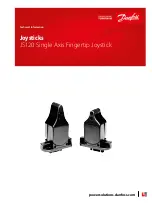
English (GB)
17
5.2.2 Checking the tightness
Fig. 19
No liquid ammonia
5.2.3 Checking the pressure connections (after changing gas
cylinder)
• Open the cylinder valve and quickly close it again.
• Slowly pass the open ammonia bottle along gas-leading parts.
– Slightly press the bottle in a pumping manner, allowing the
ammonia mist to rise up.
– Formation of white mist: Leakage at the pressure
connection!
• Depressurize the plant!
• Eliminate leakage!
• Check tightness again
Formation of white mist --> pressure connection is not tight
Fig. 20
A chlorine gas --> formation of white mist
No formation of white mist --> pressure connection is tight
Fig. 21
No chlorine gas --> no formation of white mist
Checking the inlet valve
• Remove the union nut at the overpressure connection and
take off the overpressure line.
• Close the rate valve.
• Open the cylinder valve.
• Slowly pass the open ammonia bottle along the overpressure
connection.
– Slightly press the bottle in a pumping manner, allowing the
ammonia mist to rise up.
– Formation of white mist:
The inlet valve is not tight!
• Depressurize the plant!
• Check the inlet valve and repair it!
• Check tightness again
Formation of white mist --> the inlet valve is not tight!
Fig. 22
A chlorine gas --> formation of white mist
No formation of white mist --> the inlet valve is tight!
Fig. 23
No chlorine gas --> no formation of white mist.
Warning
Liquid ammonia must not come in contact with parts
of the plant!
Danger of leakages by corrosion!
TM
04
07
09
09
08
T
M
04
07
10
09
08
TM
04
07
11
0
908
TM
04
07
12
09
08
T
M
04
07
13
09
0
8
VGB-103
VGB-103
✓
















































